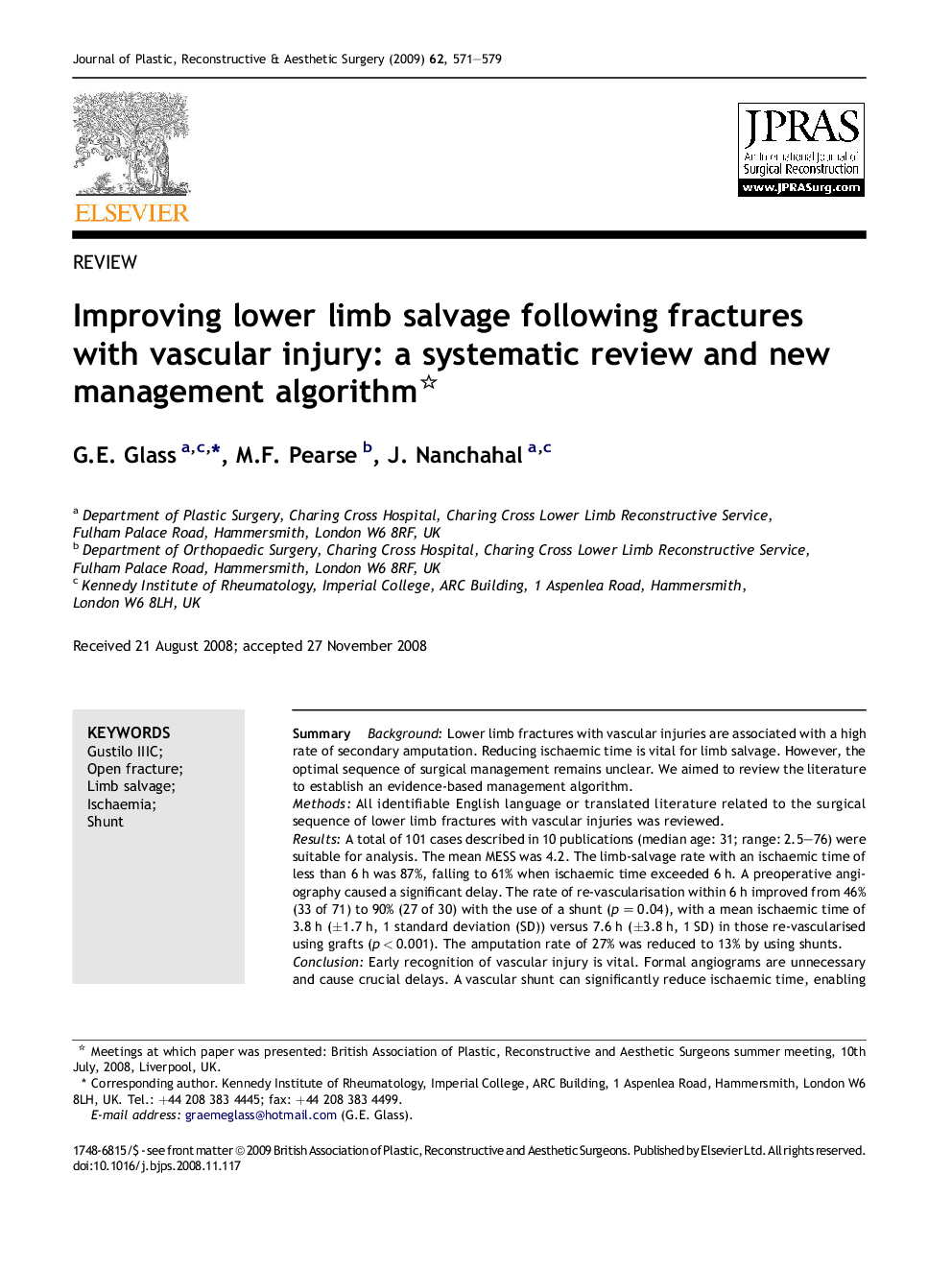| Article ID | Journal | Published Year | Pages | File Type |
|---|---|---|---|---|
| 4120586 | Journal of Plastic, Reconstructive & Aesthetic Surgery | 2009 | 9 Pages |
SummaryBackgroundLower limb fractures with vascular injuries are associated with a high rate of secondary amputation. Reducing ischaemic time is vital for limb salvage. However, the optimal sequence of surgical management remains unclear. We aimed to review the literature to establish an evidence-based management algorithm.MethodsAll identifiable English language or translated literature related to the surgical sequence of lower limb fractures with vascular injuries was reviewed.ResultsA total of 101 cases described in 10 publications (median age: 31; range: 2.5–76) were suitable for analysis. The mean MESS was 4.2. The limb-salvage rate with an ischaemic time of less than 6 h was 87%, falling to 61% when ischaemic time exceeded 6 h. A preoperative angiography caused a significant delay. The rate of re-vascularisation within 6 h improved from 46% (33 of 71) to 90% (27 of 30) with the use of a shunt (p = 0.04), with a mean ischaemic time of 3.8 h (±1.7 h, 1 standard deviation (SD)) versus 7.6 h (±3.8 h, 1 SD) in those re-vascularised using grafts (p < 0.001). The amputation rate of 27% was reduced to 13% by using shunts.ConclusionEarly recognition of vascular injury is vital. Formal angiograms are unnecessary and cause crucial delays. A vascular shunt can significantly reduce ischaemic time, enabling unhurried assessment of the feasibility of limb salvage, debridement of demonstrably non-viable tissue and safe skeletal fixation prior to definitive vascular and soft-tissue repair.
